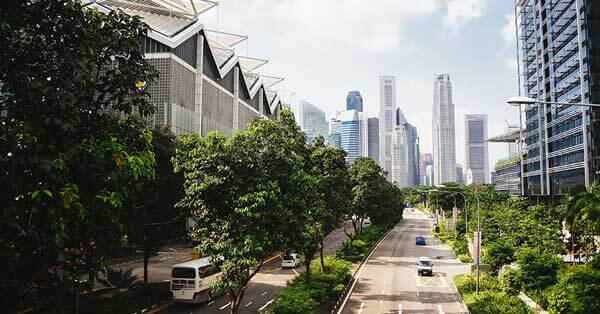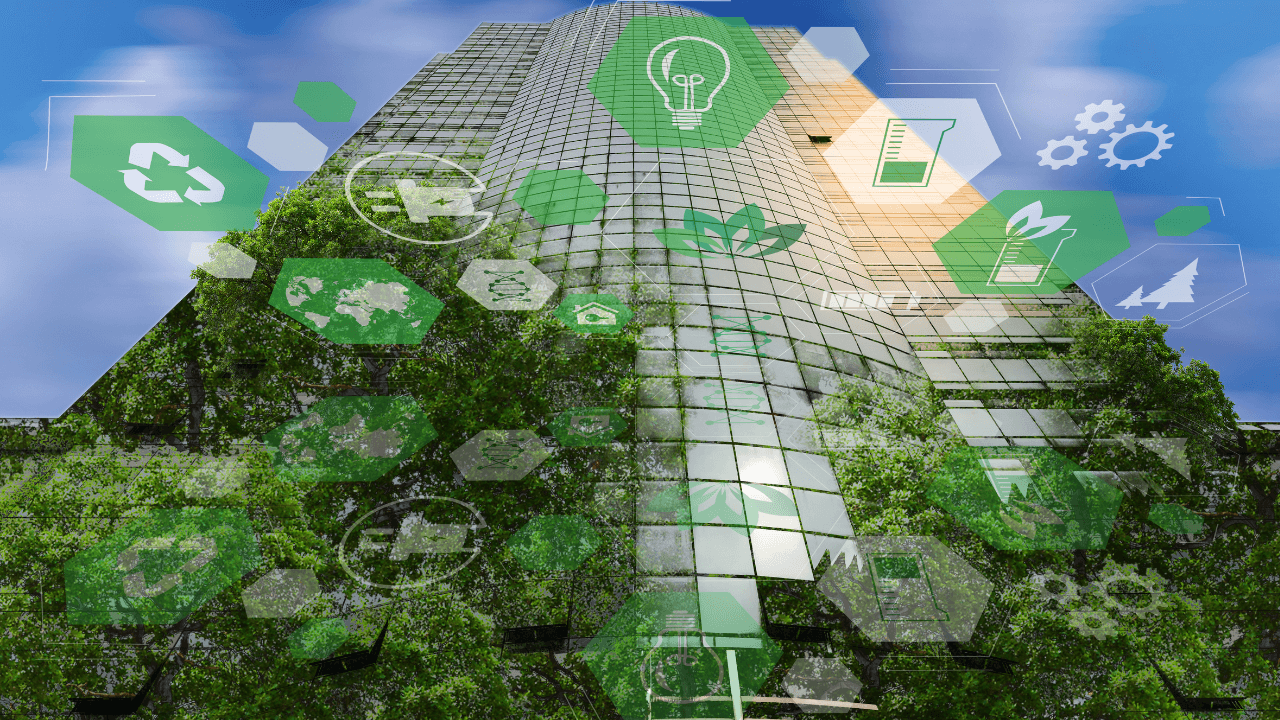
© Philipp Hodel, Zug Estates
Achieving Net Zero with Green BIM
With buildings responsible for 37% of global energy related carbon emissions in 2020 according to the Global Alliance for Buildings and Construction (GABC)1, the architecture, engineering and construction (AEC) industry has a critical role to play in decarbonization. However, the Building Performance Institute Europe’s (BPIE’s) 2022 EU Buildings Climate Tracker2 shows that emission reduction efforts are far behind where they should be, and the sector needs to rapidly catch up if carbon neutrality is to be reached by 2050. Sustainability is therefore an essential requirement from the earliest phases of a project – and an area where Building Information Modeling (BIM) can help to increase transparency and optimize buildings at an early stage.
BIM for Sustainability
BIM provides an opportunity for the AEC industry to improve resource and energy efficiency for more sustainable development. Whether for renovation or new builds – both of which play an important role in reaching net zero – BIM enables improved decision-making for both buildings and infrastructure assets across the entire asset life cycle. These decisions mean that materials are optimized, wastage is reduced, asset utilization is improved, and fewer resources are consumed during construction, operation, and even demolition.

Sustainable Design with BIM

BIM at this stage allows the project to be analyzed in greater detail at an earlier phase than traditional approaches. More information before the detailed design starts can help reduce time-consuming changes later, when there is a higher risk of errors – and therefore wasted energy and materials – with every revision. Different options can be simulated in the BIM model and the outcomes assessed based on facts, which allows far greater optimization than a 2D design could. This could be for determining efficient energy or heating usage or optimizing materials for less waste and carbon impact.
Additionally, manufacture and assembly can be designed in greater detail and improved with BIM. The design of a product – such as a prefabricated wall or precast chamber – can be simplified to reduce the manufacturing and assembly time and cost, saving materials, energy, and CO2 emissions. By linking the BIM components with manufacturer-specific environmental product declarations, a building resource passport is created for the building, which will probably also have to be provided to real estate buyers in Germany in the future.
BIM for Sustainable Construction
In terms of sustainability, the main benefit of BIM during the construction phase is the elimination of communication uncertainties or methods that lead to increased emissions and wasted materials through delays and re-work. Waste on site can be avoided through enhanced planning, such as simulating the construction sequence using the BIM model or visualizing the site layout and planning equipment and materials placement, access, and storage. BIM also enables precise manufacturing data for industrialized, prefabricated, and modular construction to be produced in a format that fabricators and manufacturers can use directly from the model, so there is a seamless flow of data from the design direct to the manufacturing machines.
Once on site, going paperless is achievable with BIM and digital tools. Using tablets, the BIM model can provide project information while on site, as well as enable information to be shared and issues managed easily and transparently. Tools such as the mTim mobile app enable precast production or assembly information to be accessed and updated quickly from a mobile device.
The continuous comparison between point clouds and the BIM model creates a valuable information basis for all parties involved to enable an error-free production of the respective building components. As-built models reduce risks and effort, especially for downstream trades.

Sustainable Facilities Management with BIM

BIM has many applications for the sustainable operation of the asset once in use, whether for predicting future maintenance, planning refurbishments, or managing energy usage. BIM provides a virtual replica of the completed asset, which is useful for monitoring energy consumption or planning the efficient use of energy by monitoring the usage of interior space. The information contained in a data-rich BIM model makes it easier to plan repairs and maintenance, track performance, or ensure efficient refurbishments. The BIM model also provides important data to derive a material passport for any future refurbishments or demolition in the sense of circular economy, so the exact materials used can be quickly identified, located, and assessed for reuse.
Green BIM for Net Zero
The optimization of designs, construction approaches, and facilities management that BIM enables has considerable sustainability benefits – reducing carbon emissions from construction activities, minimizing the use of natural resources, and avoiding the creation of waste. In a future where climate action is a necessity, digital workflows that can improve the efficiency and sustainability of the built environment are a valuable addition to the industry’s sustainability toolkit.
The above examples are just a very brief summary of how BIM can help achieve net zero targets. To learn more about the multiple ways that BIM supports net-zero construction, download our whitepaper, Green BIM – Digital Solutions for Sustainability.

ALLPLAN is part of the Nemetschek Group.
-
Singapore: ALLPLAN Software Singapore PTE. LTD. |
4 Battery Road #25-01, Bank of China Building
49908 Singapore - customercare.singapore@allplan.com

